Titbits and News from the Mare Nostrum
Bronze Age: A Golden Age for Jewellery
Gold jewellery first made an appearance in the Copper Age in northeastern Bulgaria. By the Bronze Age, the elites in the Bronze Age communities throughout Europe were using gold to display their position in society.
By Nick Nutter on 2024-05-11 | Last Updated 2025-05-20 | Titbits and News from the Mare Nostrum
This article has been visited 3,964 times

Spiral gold bronze age bracelet
All That Glitters
While named for bronze, a significant amount of jewellery from the Bronze Age was actually crafted from gold. This precious metal's properties made it ideal for adornment. Gold's rich colour, malleability, and resistance to wear and tear attracted Bronze Age metalworkers. They employed techniques similar to those used for bronze to melt, shape, and transform gold into elegant bracelets, rings, necklaces, and impressive neck collars.
The Rise of the Goldsmith
The skilled individuals who worked with gold, creating prestigious objects and ritualistic pieces, held a high status within Bronze Age societies. Archaeologists often refer to these artisans as "goldsmiths."
Do you enjoy my articles? For your reading pleasure, this website does not carry third party ads. You could help me write more articles by buying me a cup of coffee.
Unearthing the Sources of Bronze Age Gold


Bronze age sources of gold in Europe
During this prehistoric period, gold could be found in various regions across Europe, including the Carpathians, Iberia, southwestern France, Brittany, Britain, and Ireland. Notably, Ireland's rich gold reserves earned it the nickname "an ancient El Dorado." The Middle East (Taurus Mountains) and Nubia were also sources of gold. Interestingly, accounts from the Late Bronze Age describe the abundance of Egyptian gold as being "like dust on the streets."
Early Goldwork in Europe
The Varna Culture, a Copper Age society in northeastern Bulgaria, is generally credited with the earliest use of gold in Europe. An elite male burial at the Varna Necropolis, dating back to 4569-4340 BC, was adorned with gold bracelets, rings, studs, and even a mace. Remarkably, this necropolis has yielded more gold artifacts than all the excavated sites combined from the same period across the globe, including Mesopotamia and Egypt. Some of the graves, symbolically empty, contained the most significant quantities of goldwork. Until an even earlier site is unearthed, the Varna goldsmiths appear to be the world's pioneering goldworkers.
Jewellery: A Reflection of Life and Culture


The rise of metalworking techniques led to a surge in the popularity of jewellery during the Bronze Age. It became an integral part of life and culture, serving various purposes. Jewellery was worn for decoration, incorporated into religious ceremonies and rituals, and even included in burials for individuals of high importance, highlighting its value in Bronze Age society. Before the advent of metallurgy, bodily adornment typically consisted of shells, bones, and stones.
Fashions of the Bronze Age


Gold beads
Like trends today, styles in jewellery during the Bronze Age circulated, although at a slower pace. Just as with ceramics, clothing, and hairstyles, fashions in jewellery were shared across communities. Both men and women adorned themselves with jewellery, with the elite of both sexes favouring gold pieces. For those of lesser social standing, accessories were crafted from amber (still a valuable commodity at the time), seashells, or bone.
Treasures from the Past: Examples of Bronze Age Jewellery
Gold Diadem of Caravaca de la Cruz (Murcia)


Gold Diadem of Caravaca de la Cruz (Murcia)
This unique piece, dated to the El Argar period (2000-1550 BC), was discovered in Caravaca de la Cruz, Spain. Unlike other diadems found in metalworking settlements, which were made from silver, this one is crafted from gold. Archaeologists believe it was a prestigious object reserved for women, symbolizing power and social status.
This piece lacks a precise archaeological context, although its provenance from an Argaric site, the Estrecho de la Encarnacion in the municipality of Caravaca de la Cruz, is well documented, from one of whose graves it could have emerged.
It is a unique piece since all the diadems found in the tombs of metal-working Argar culture settlements, though similar in form, are made of silver. For this reason, archaeologists have interpreted it as a luxury object reserved solely for women, as it appears in a female burial, who used it to publicly display their power and social prestige.
Four diadems of similar shape made of silver, although smooth, come from the burials excavated by the brothers Henry and Luis Siret in the eponymous site of El Argar. Those diadems are today dispersed between the Royal Museums of Art and History in Brussels, the British Museum in London and the Ashmolean Museum in Oxford.
These four diadems corresponded to funerary trousseau composed of ceramics and decorative elements, which have been interpreted as corresponding to women. Luis Siret himself, based on his findings, made a drawing in which he reconstructed the way in which Argaric women would have worn this type of jewel, girding their hair and with the front end covering the nose.
Gold Headband from Quinta da Agua Branca, Portugal


Gold Headband from Quinta da Agua Branca, Portugal
Dating to around 2000 BC, this headband was unearthed in a cyst grave. Notably, the grave also contained an arsenical bronze sword and several rings, indicating it belonged to a male warrior. This finding indicates that men were not shy about wearing jewellery during the Bronze Age.
Amber Bead Bracelet from Nizna Mysla


Amber Bead Bracelet from Nizna Mysla
Amber requires specific conditions to form and was a valuable material. While amber deposits exist worldwide, only Baltic amber was accessible to Europeans during the Bronze Age.
The Nizna Mysla cemetery of the Otomani-Fuzesabony Culture in the Carpathian Basin is considered to be one of the most important early bronze age sites in Central Europe.
This beautiful bracelet, crafted from Baltic amber beads, dates to between 1780 and 1690 BC.
Bronze Age Ear Decorations


Bronze age ear tunnels and rings
Earrings were a popular adornment for both sexes during the Bronze Age. In El Argar territories, enlarged earlobes with tunnels for dangling earrings were considered particularly stylish. Elite females wore silver earrings, while men sported gold ones.
Bronze Age Headdresses


Ornamental bronze age headdress
People of the Otomani-Fuzesabony Culture in the Carpathian Basin adorned their heads with elaborate headdresses. A tomb excavation at Encs yielded an exquisite headdress crafted from gold, bronze, and shells, dating back to 1900-1700 BC.
Bronze Age Hair Care


Bronze Age ivory comb - El Argar
Far from being an unkempt ruffian, the well-dressed bronze age human took care of their hair. An ivory comb found at Cabezo Redondo dates to about 1400 BC.
Note the work that must have gone into carving out the tines and the finger holes for extra purchase. This artefact also shows that ivory from either Asian or African, probably the latter, elephants, was making its way into the Iberian Peninsula during this period.
Cabezo Redondo was a Bronze Age settlement during the El Argar period. Its location, alongside the now-disappeared Lagoon of Villena near Alicante, gave the inhabitants easy access to fresh water, salt, pastures, fishing and hunting.
Princely Gold Bracelet


Solid gold bracelet
About 1940 BC, an elite male was buried at the Leubingen Tumulus.
The Leubingen tumulus is an Early Bronze Age "princely" grave of the Unetice culture, dating to about 1940 BC. It is located near the hills of Kyffhäuser in Leubingen, an Ortsteil of Sommerda in the eastern German state of Thuringia.
Part of the grave goods included this fine gold bracelet. Notice the fine ornamental engraving.
Spirals


Gold spiral ring
The spiral had been a popular decorative feature for thousands of years before the bronze age. It was used to denote infinity either past or future. Spirals of one sort or another can be seen in cave paintings and engraved on stelae and plagues. During the bronze age the spiral was incorporated into the design of all sorts of jewellery, with the spiral shape particularly lending itself to bracelets and rings.
This spiral ring, in gold, is typical of those found in bronze age graves throughout Europe.
Do you enjoy my articles? For your reading pleasure, this website does not carry third party ads. You could help me write more articles by buying me a cup of coffee.
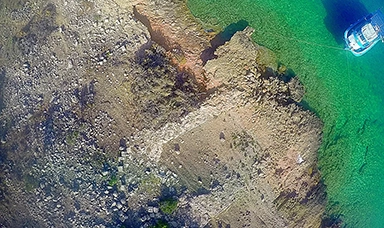 Dana Island, oldest ancient shipyard
Dana Island, oldest ancient shipyard A Bronze Age Courier Service
A Bronze Age Courier Service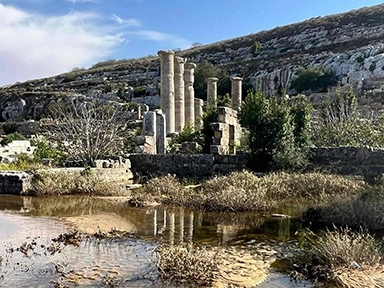 Cyrene's Lost Treasures
Cyrene's Lost Treasures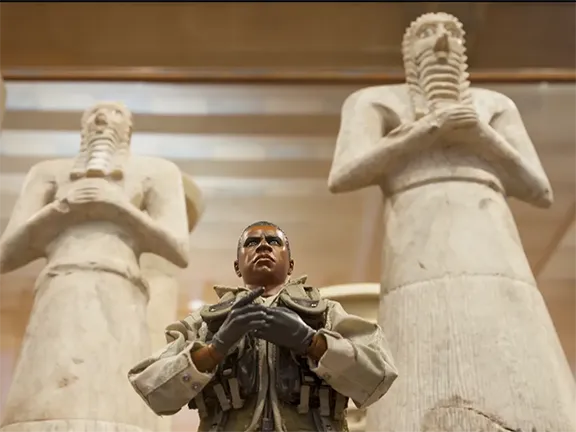 The Invisible Enemy
The Invisible Enemy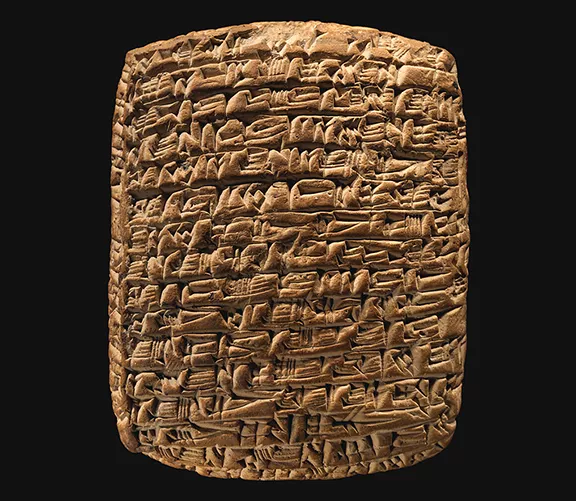 The World's First Company
The World's First Company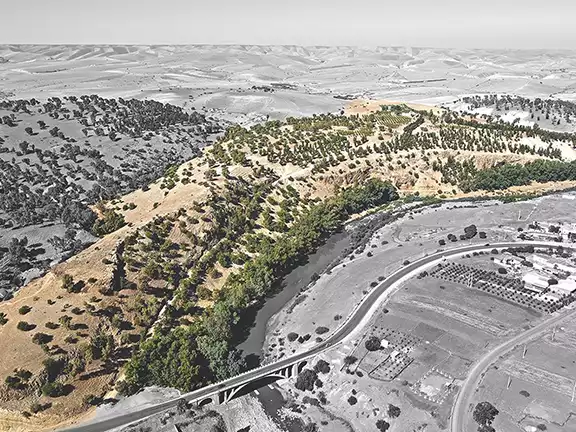 The Copper Age Site of Oued Beht
The Copper Age Site of Oued Beht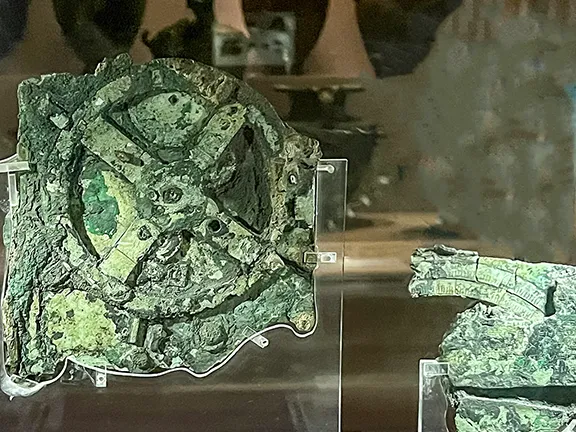 How the Antikythera Mechanism Works
How the Antikythera Mechanism Works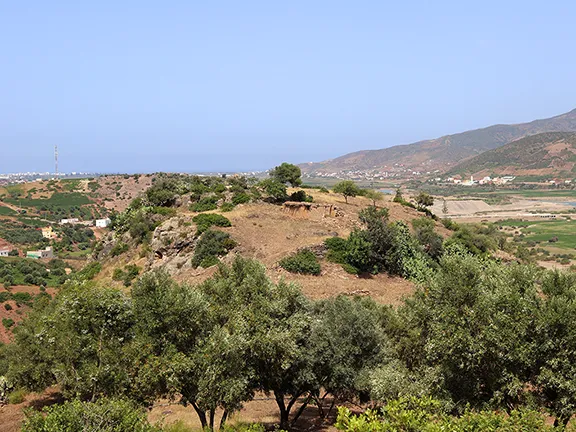 Kach Kouch and Iberia
Kach Kouch and Iberia Mediterranean Diet Evolution
Mediterranean Diet Evolution Hidden Colours of Ancient Statues
Hidden Colours of Ancient Statues Cleopatra: Egypt's Last Pharaoh
Cleopatra: Egypt's Last Pharaoh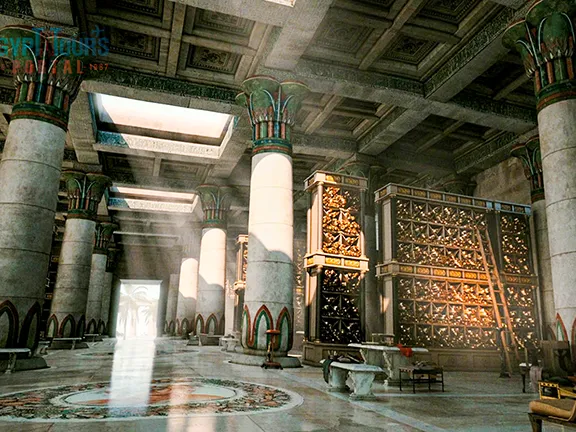 Alexandria Library's True Fate
Alexandria Library's True Fate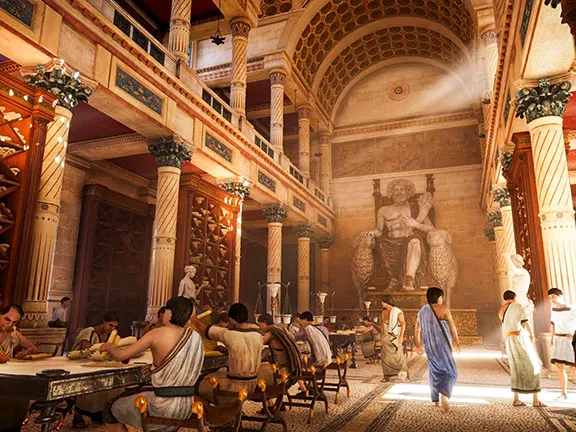 Six Great Ancient Libraries
Six Great Ancient Libraries Ancient Greek Technology
Ancient Greek Technology Broadening Horizons
Broadening Horizons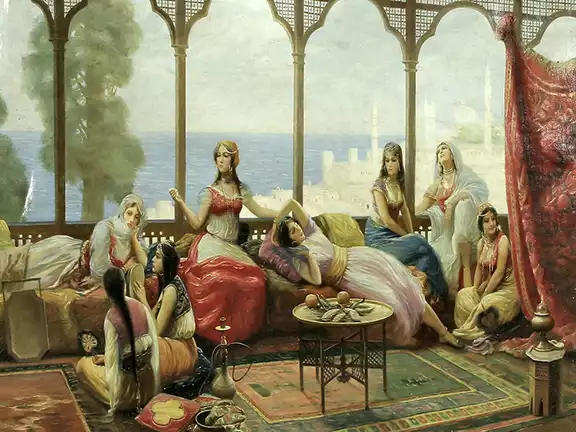 The Nadītu Investors of Sippar
The Nadītu Investors of Sippar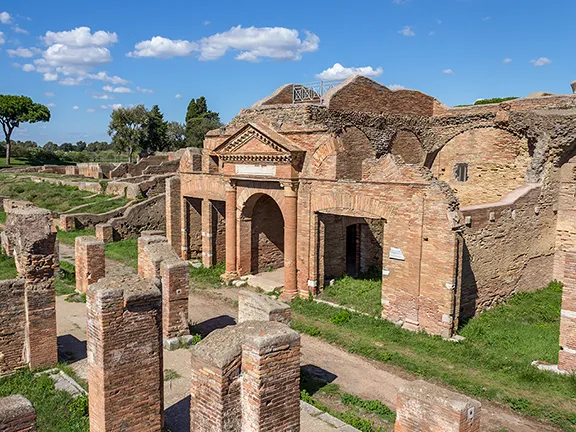 New light on Hadrian
New light on Hadrian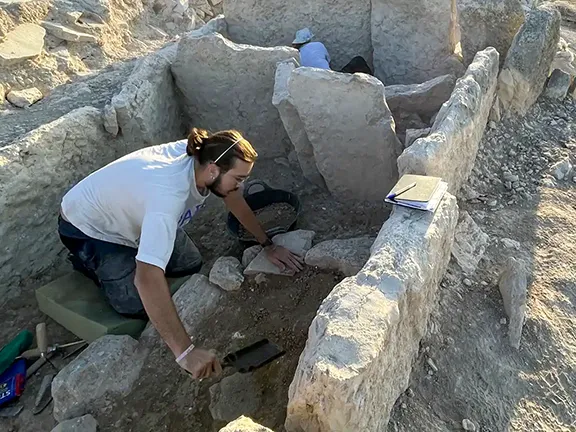 The Dolmens of La Lentejuela Teba
The Dolmens of La Lentejuela Teba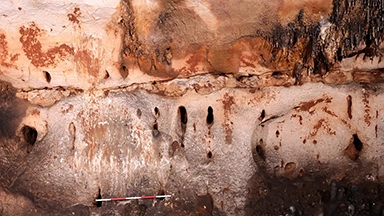 New Cave Art Discovery in Valencia region
New Cave Art Discovery in Valencia region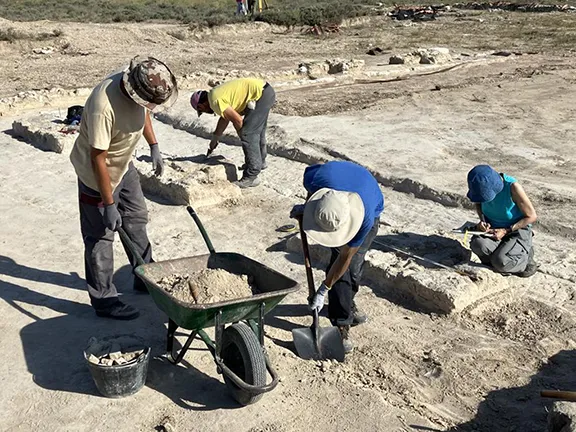 La Cabaneta Oldest Roman Forum in Iberian Peninsula
La Cabaneta Oldest Roman Forum in Iberian Peninsula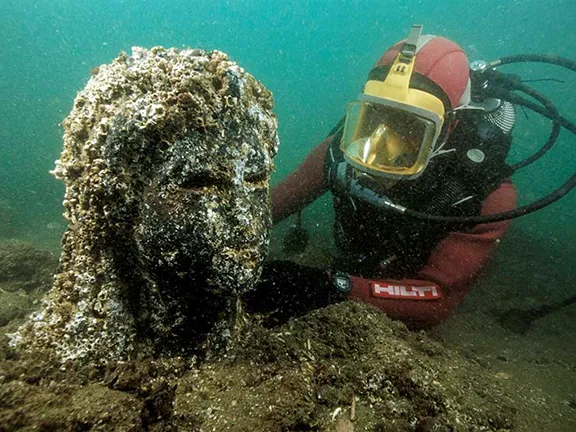 New Discoveries at Ancient Sunken City of Thonis-Heracleion
New Discoveries at Ancient Sunken City of Thonis-Heracleion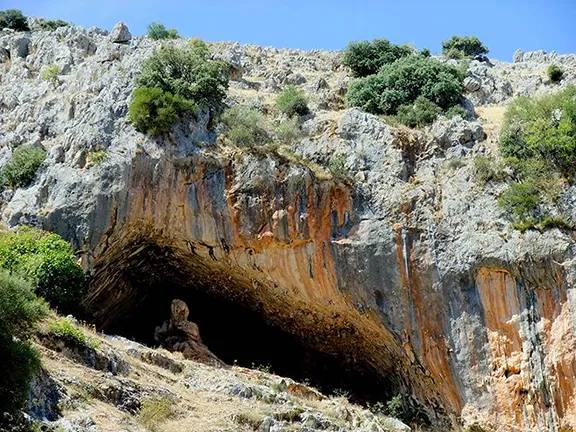 Europe's Oldest Shoes Found: 6,000-Year-Old Sandals Woven from Grass
Europe's Oldest Shoes Found: 6,000-Year-Old Sandals Woven from Grass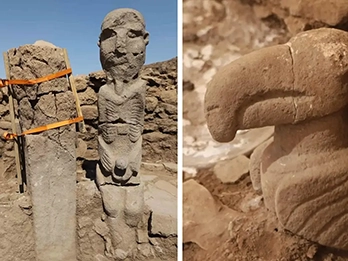 Discoveries at Gobekli Tepe and Karahan
Discoveries at Gobekli Tepe and Karahan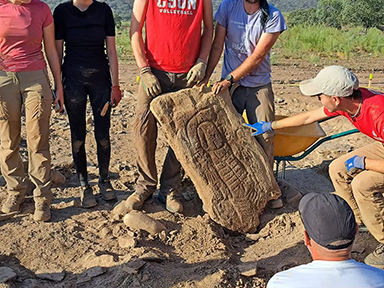 Decorated Stelae found in Canaveral de Leon, Spain
Decorated Stelae found in Canaveral de Leon, Spain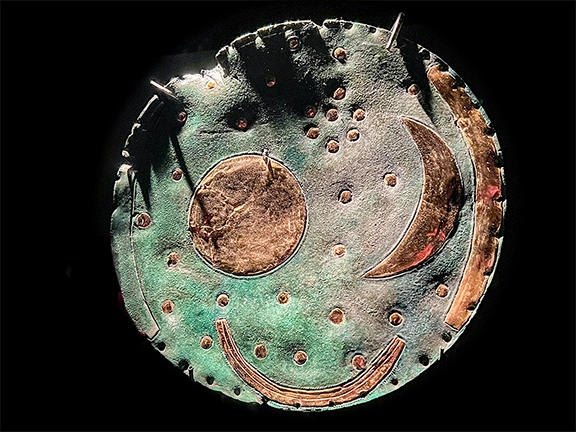 The Nebra Sky Disc: A Bronze Age Calendar
The Nebra Sky Disc: A Bronze Age Calendar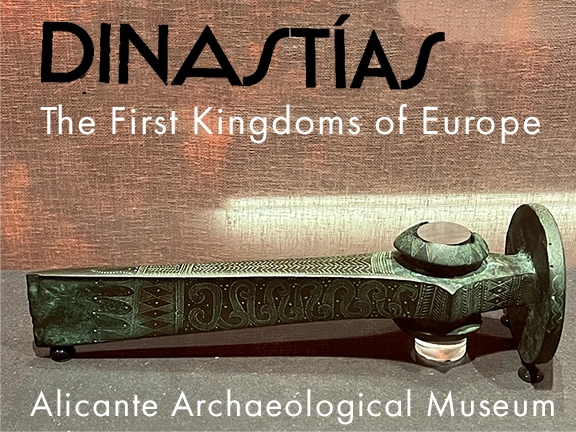 New Exhibition at the Archaeological Museum in Alicante
New Exhibition at the Archaeological Museum in Alicante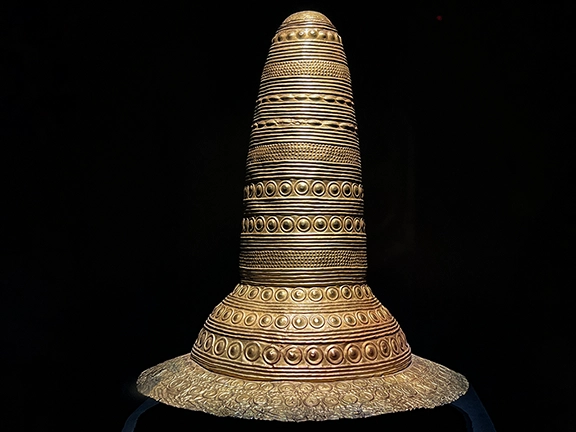 The Golden Hat of Schifferstadt
The Golden Hat of Schifferstadt